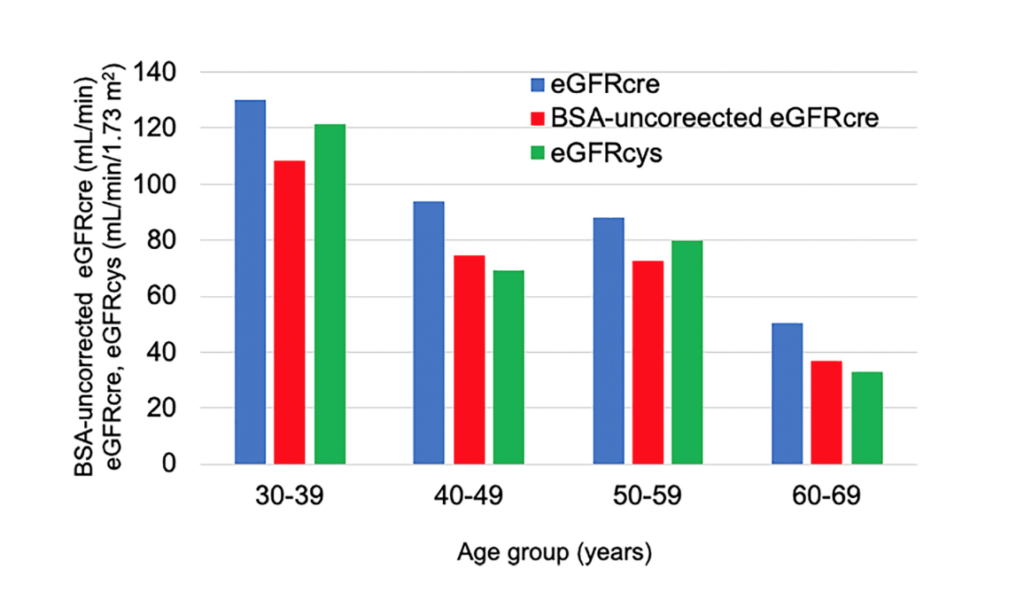Dr. Masaya Koshizaka from the Department of Endocrinology, Hematology, and Gerontology at Chiba University Graduate School of Medicine, details a research paper he co-authored that was published by Aging (Aging-US) in Volume 15, Issue 9, entitled, “Renal dysfunction, malignant neoplasms, atherosclerotic cardiovascular diseases, and sarcopenia as key outcomes observed in a three-year follow-up study using the Werner Syndrome Registry.”
Behind the Study is a series of transcribed videos from researchers elaborating on their recent studies published by Aging (Aging-US). Visit the Aging (Aging-US) YouTube channel for more insights from outstanding authors.
—
Hello everyone. Thank you for watching. I am Masaya Koshizaka from Department of Endocrinology, Hematology, and Gerontology at the Center for Preventive Medical Sciences in Chiba University. Today I’ll talk about our study named, “Renal dysfunction, malignant neoplasms, atherosclerotic cardiovascular diseases, and sarcopenia as key outcomes observed in a three-year follow-up study using the Werner Syndrome Registry.”
First, I’d like to introduce Werner syndrome. Werner syndrome is an autosomal recessive adult onset progeroid disorder that effects approximately 700 to 2,000 individuals in Japan. Most of the reported cases, about 60-80%, were from Japan. Patients with Werner syndrome present with various aging phenotypes from a young age like this. Graying and/or loss of hair present in their third decades of life, bilateral cataracts and diabetes around their fourth decades of life, and atherosclerotic disorders, diseases, and malignant neoplasms around their fourth or fifth decades of life. This patient also developed a high proportion, about 70%, of skin ulcer like this, often requiring amputation of the lower extremities, about 30%. Since it is a rare disease, there is often a long period between the disease onset and the diagnosis. Therefore, early detection and therapeutic intervention are important.
Recently, the number of long-term survivors has increased due to therapeutic advances, however, new complications have also been observed. Also, detailed and long-term involvement in medical care is essential for maintaining quality of life and ADL. Few reports have further changes over time in patients with Werner syndrome.
The Werner Syndrome Registry was established in 2017 to investigate the disease, recruit participants for clinical trials, and provide information to patients and physicians. In this report, the updated cross-sectional and longitudinal analysis of the Werner Syndrome Registry database were performed to review the current status and natural cause in patients with Werner syndrome. It was reported that the patients with Werner syndrome died from cardiovascular diseases and malignant neoplasms. However, in this study, metabolic disorder were well controlled and no one died from atherosclerotic diseases, suggesting that these diseases contribute to increasing life expectancy. However, malignant neoplasms is a major cause of death, with high prevalence, and renal dysfunction is a new concern for the patients with Werner syndrome.
Next, I’ll talk about the malignant neoplasms. The prevalence of malignant to neoplasms is high, at approximately 30%, and is an important cause of death. In Werner syndrome, malignant neoplasms develop at a younger age, about more than 10 years than the general population. And non-epithelial neoplasms, in particular, are often fatal, while some cases with epithelial neoplasms survive for a long time after onset. Therefore, the screening of malignant neoplasms are very important.

Next, I’ll talk about renal function. It became clear for the first time that there is a discrepancy in renal function, depending on the indexes. This left figure shows the main renal function in each age group over the entire study period. The blue bar shows an estimate in glomerular refrigeration rate calculated by creatinine, the red bar shows the body surface area and collected eGFR, and the green bar shows the eGFR calculated from cystatin C. As you see, there is a discrepancy depending on the indexes.
Next, I’ll talk about renal function. It became clear for the first time that there is a discrepancy in renal function, depending on the indexes. This left figure shows the main renal function in each age group over the entire study period. The blue bar shows an estimate in glomerular refrigeration rate calculated by creatinine, the red bar shows the body surface area and collected eGFR, and the green bar shows the eGFR calculated from cystatin C. As you see, there is a discrepancy depending on the indexes.
In conclusion, this study qualified secure changes in multiple patients with Werner syndrome for three years. The mobility due to malignant neoplasms is high even in those of younger ages. Therefore, it is necessary to carry out active and detailed screening examinations for malignant neoplasms. Regarding renal function, renal function declined rapidly, therefore, a variation based on the BSA and collected eGFR or eGFR calculated cystatin C. It is also necessary to pay attention to the content and the amount of the medicine, such as NSAIDs and antibiotics and drugs for cancer, to be used.
Lastly, we will continue the Registry and the research in order to change the future better for the patients who are still suffering. Thank you for watching.
Click here to read the full study published by Aging (Aging-US).
—
Aging (Aging-US) is an open-access journal that publishes research papers bi-monthly in all fields of aging research and other topics. These papers are available to read at no cost to readers on Aging-us.com. Open-access journals offer information that has the potential to benefit our societies from the inside out and may be shared with friends, neighbors, colleagues, and other researchers, far and wide.
For media inquiries, please contact [email protected].
